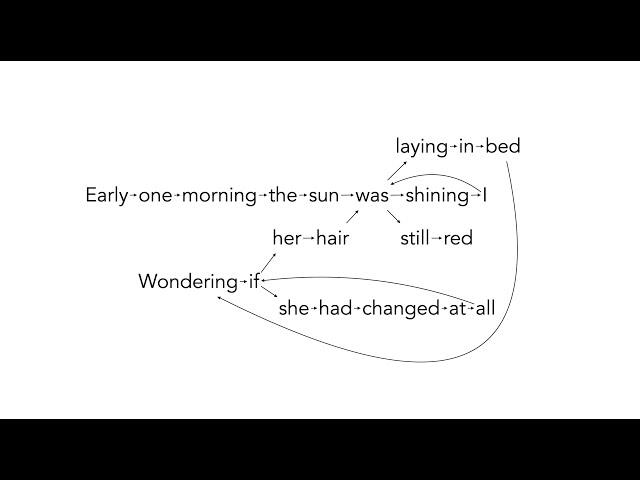
Large Language Models from scratch
Комментарии:

Training a large language model from scratch is a complex and resource-intensive task that requires a deep understanding of natural language processing, access to significant computational resources, and large amounts of data. Here are the general steps involved in training a large language model from scratch:
1. Define Objectives:
- Clearly define the objectives and goals of your language model. Decide what tasks it should be capable of performing, such as text generation, translation, question answering, etc.
2. Collect Data:
- Gather a vast amount of text data from various sources. This data can include books, articles, websites, and other textual sources. High-quality, diverse data is essential for training a robust language model.
3. Data Preprocessing:
- Clean and preprocess the data by removing noise, formatting, and irrelevant content. Tokenize the text into smaller units, such as words or subword units (e.g., Byte-Pair Encoding or SentencePiece).
4. Model Architecture:
- Choose a suitable neural network architecture for your language model. Popular choices include recurrent neural networks (RNNs), transformers, and their variants. Transformers, especially the GPT (Generative Pre-trained Transformer) architecture, have been widely successful for large language models.
5. Model Design:
- Design the specifics of your model, including the number of layers, attention mechanisms, hidden units, and other hyperparameters. These choices will affect the model's size and performance.
6. Training:
- Train the model on your preprocessed dataset using powerful hardware like GPUs or TPUs. Training a large language model from scratch typically requires distributed computing infrastructure due to the enormous amount of data and computation involved.
7. Regularization:
- Implement regularization techniques like dropout, layer normalization, and weight decay to prevent overfitting during training.
8. Optimization:
- Choose an optimization algorithm, such as Adam or SGD, and fine-tune its hyperparameters to ensure efficient model convergence.
9. Hyperparameter Tuning:
- Experiment with different hyperparameters (e.g., learning rate, batch size) and training strategies to optimize your model's performance.
10. Evaluation:
- Evaluate your model's performance on various natural language processing tasks to ensure that it meets your objectives. Use metrics like perplexity, BLEU score, or F1 score, depending on the specific tasks.
11. Fine-Tuning:
- After initial training, fine-tune your model on specific downstream tasks, if required. Transfer learning is a powerful technique that leverages pre-trained models to perform well on specific tasks with less data.
12. Deployment:
- Once your model performs well, deploy it in the desired application, whether it's a chatbot, language translation service, or any other NLP task.
13. Monitoring and Maintenance:
- Continuously monitor your model's performance in production and update it as necessary to adapt to changing data distributions or requirements.
It's worth noting that training large language models from scratch can be resource-intensive and time-consuming, requiring access to significant computational power and expertise in machine learning. Many organizations choose to fine-tune pre-trained models on specific tasks, which can be more efficient and effective for many practical applications.

very well explained!
Ответить
Absolutely brilliant..great examples
Ответить
Straight away subscribed .... i would really love these videos in my feed daily.❤
Ответить
GREAT!
Ответить
Good job bro, JESUS IS COMING BACK VERY SOON; WATCH AND PREPARE
Ответить
Please make a video on how to train a model from scratch :-)
Ответить
This is fantastic. Thank you for sharing.
Ответить
Language models suck, hence its the first thing I disable on any phone
Ответить
Why is it only 10^50 rather than 10^100,000 possible phrases?
(This is probably a dumb question, but I just can't remember where I might be miscalculating.)

Thank you so much! Very well and simply explained!
Ответить
Fantastic. Please teach more
You are a legend.

I don't get the same recommended word as u get most of the time. Y so?
U might say recommendation system, but when I search for how in my phone and laptop, it recommends different!!

Great ! Onto part 2 😃
Ответить
Omgg are you serious? You have some top-notch pedagogical skills.
Ответить
Incredibly well explained! Thanks a lot!
Ответить
Word math
Ответить
The content is gem. Thank you for this.
Ответить
It's so easy I can understand none of this.
Ответить
AMAZING!
Ответить


![Hakuba(Cavendish) VS Dellinger! [1080p] - One Piece Hakuba(Cavendish) VS Dellinger! [1080p] - One Piece](https://invideo.cc/img/upload/Z3ZaUFJBNXczalQ.jpg)






















